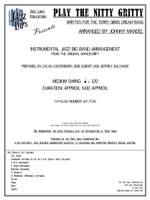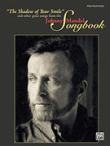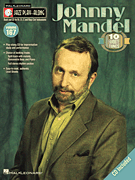PLAY THE NITTY GRITTY [DOWNLOAD]
Arranged by Johnny Mandel, Prepared by Dylan Canterbury, Rob DuBoff, and Jeffrey Sultanof

Cat #: JLP-7536DL
$75.00This product is available for immediate download after purchase.
Questions?
Please call +1-518-587-1102 or email us.
Audio Sample:
Edition: Jazz Big Band Arrangement
Description: Swing - Medium Difficult
Publisher: Jazz Lines Publications
This Johnny Mandel arrangement for the Terry Gibbs Dream Band has an interesting history. Originally recorded in 1959, Gibbs composed the tune under the title "Play The Nitty Gritty." Television personality and jazz fan Steve Allen added lyrics to Gibbs' melody, re-titling it "I Could Hardly Wait For Saturday Night." It was in this form that the arrangement was originally released as a single featuring vocalist Jackie Paris. Since then, Gibbs has tweaked the arrangement to allow it to be performed by instrumental ensembles under the song's original title.
The playfully loping nature of the arrangement is established right off the bat, with a highly tongue-in-cheek use of a plunger-muted trumpet section riffing off of the saxophones and trombones. The stop-time melody treatment begins at measure 11. Here, the melody is played in unison by vibraphone, tenor sax, trumpet and trombone, while most of the rest of the band provides accompaniment via finger snaps. The full band kicks back in at measure 27, with the melody shifting solely to the vibraphone during this section. The finger snaps return at measure 35, as do the plunger muted trumpets from the beginning of the arrangement.
A low and fat trombone blast sets up a vibraphone solo at measure 43. The horn backgrounds from the melody are recycled on the vibraphonist's final solo chorus. An eight-bar ensemble send-off (with another round of plunger muted trumpets) sets up a two-bar tenor saxophone break into a key change and additional solo choruses at measure 84. This section contains no backgrounds, and can be opened up for as many choruses or soloists as you wish.
Another key change occurs following the final solo chorus at measure 117, this time to signal the arrangement's shout section, propelled continuously by a raunchy drum backbeat. Rhythmically simple, this section should contain quite a bit more overall weight to its sound than any point so far. A new short stop-time section, this time featuring a call and response between the vibraphone and two alto saxes, breaks up the intensity for just a moment before the backbeat returns at measure 125. This call-and-response stop-time is repeated again at measure 137. The brass play one more climactic fanfare before a playful saxophone line sets up the final mildly dissonant ensemble chord.
This arrangement is for jazz big band with vibraphone soloist. It is not a transcription - it has been prepared from Mandel's original parts, with a list of edits provided by Gibbs.
Vibraphone Soloist
2 Alto Saxophones
2 Tenor Saxophones
Baritone Saxophone
4 Trumpets
3 Trombones (Trombone 3 Optional)
Bass Trombone
Guitar
Piano
Bass
Drums
Trombone 1: Bb4











